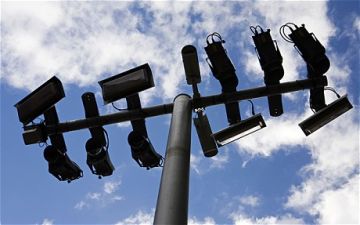
Getting a $50 ticket for missing a red light is unpleasant enough. But when it is received in the mail without warning, generated from an unmarked camera, it can cause resentment.
“If there were signs up, yes, I’d feel differently,” said Dan Rosenbaum after he received his camera-based ticket for an infraction in Brooklyn.
Mr. Rosenbaum’s reaction is common among drivers who question whether the cameras are deployed to prevent accidents or to generate revenue. The absence of a caution sign can raise suspicions.
In New York, there are red-light cameras at 150 intersections; none of the cameras are marked. The idea is to keep drivers vigilant. “We want people to obey the law everywhere,” said Polly Trottenberg, commissioner of the city’s Transportation Department.
Drivers are increasingly being alerted to the cameras through other means — from navigation devices to traffic apps like Waze, which allows drivers to mark the location of cameras and radar traps.
“I use Waze, even when I know where I’m going,” said Bobby Orbach, a technology entrepreneur in Brooklyn who has also received an automated $50 fine. “It will say, watch out, red-light camera ahead.”
On an average day in New York, Waze users report 74,000 incidents, including accidents, construction zones and the presence of police, according to the company, which is owned by Google.
Many municipalities welcome such technology and see it as a deterrent that helps improve traffic safety.
“In general, it’s more likely to be effective if the program is publicized,” said Anne McCartt, a senior researcher at the Insurance Institute for Highway Safety. Although there is no specific research on posted warning signs and their deterrent effect, she said, “You want to not just enforce the law but publicize the enforcement.”
A 2005 study by the Federal Highway Administration looked at red-light camera programs in seven cities and found that while they accounted for a 25 percent drop in front-to-side collisions, there was a 15 percent increase in rear-end accidents.
Some cities have reduced the number of cameras or even gotten rid of them altogether. According to the I.I.H.S., the number of communities with red-light cameras fell from 540 in 2012 to 466 as of this month.
While New York City has recently been adding speed cameras, revenue from existing red-light cameras has been falling. Those cameras generated $28 million in 2014, down from $71 million in 2011, said Ms. Trottenberg, the transportation commissioner.
New York has no plans to remove the cameras, but falling revenue can cause other municipalities to abandon these programs. Increased political pressure is another motivation.
To see the original article go to The New York Times.




